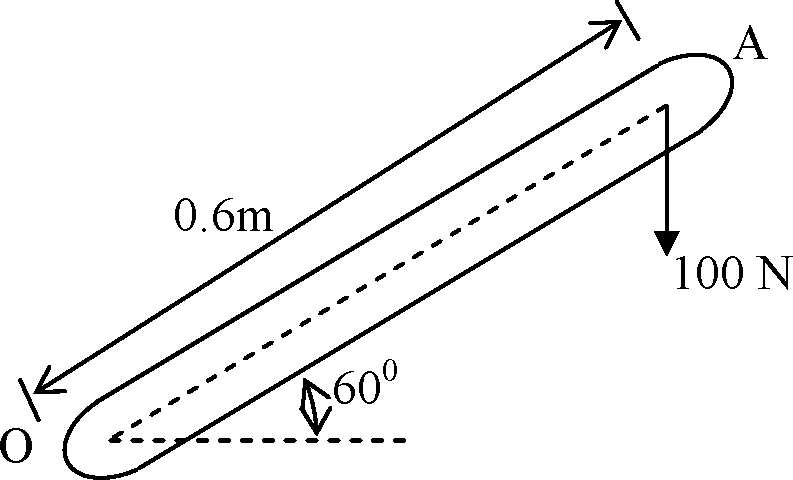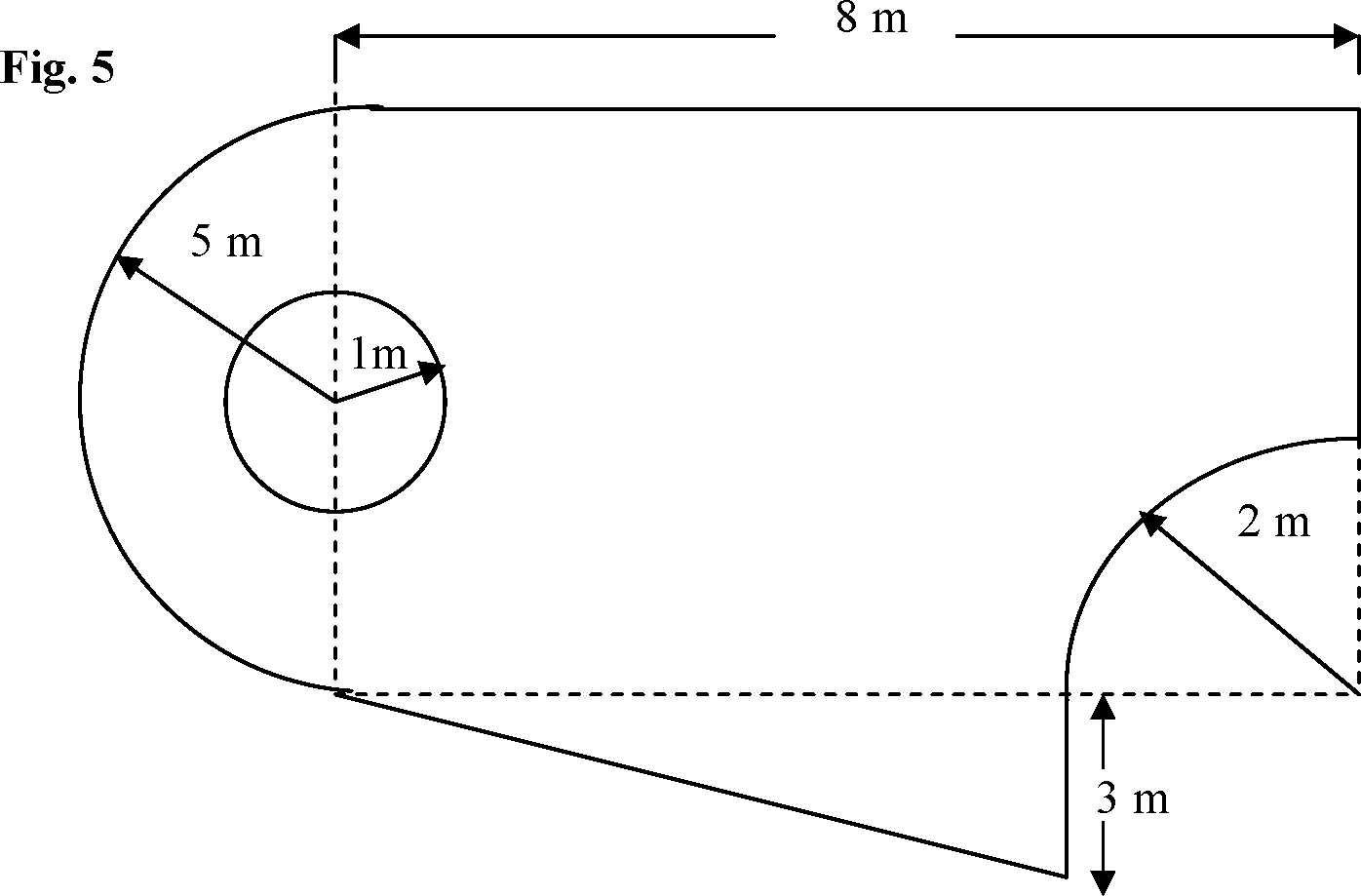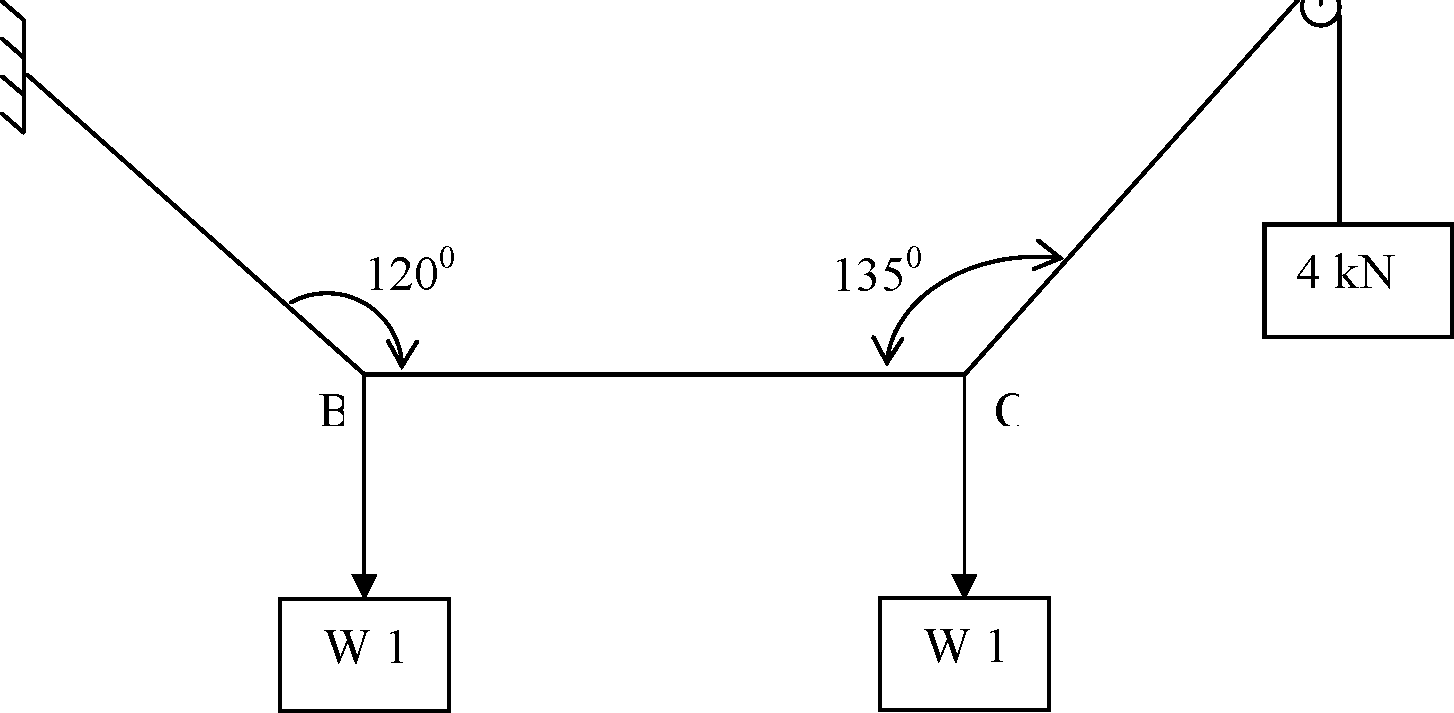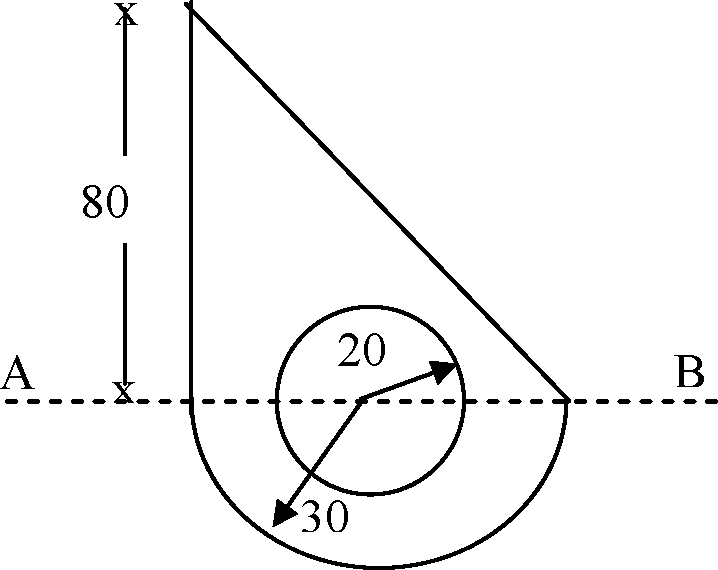|
<-5 I <05>
A
->k-
0 .2 0.75
o<->
d) A 100 N vertical force is applied on a shaft at A as shown in Fig 2. Determine the effect of 100 N force at O. 05
Fig. 2
3. a) The force 390 N shown in Fig. 3 is the resultant of four forces. Out of them, three are shown in the figure. Find the missing force and its position. 10
|
Fig. 3 | 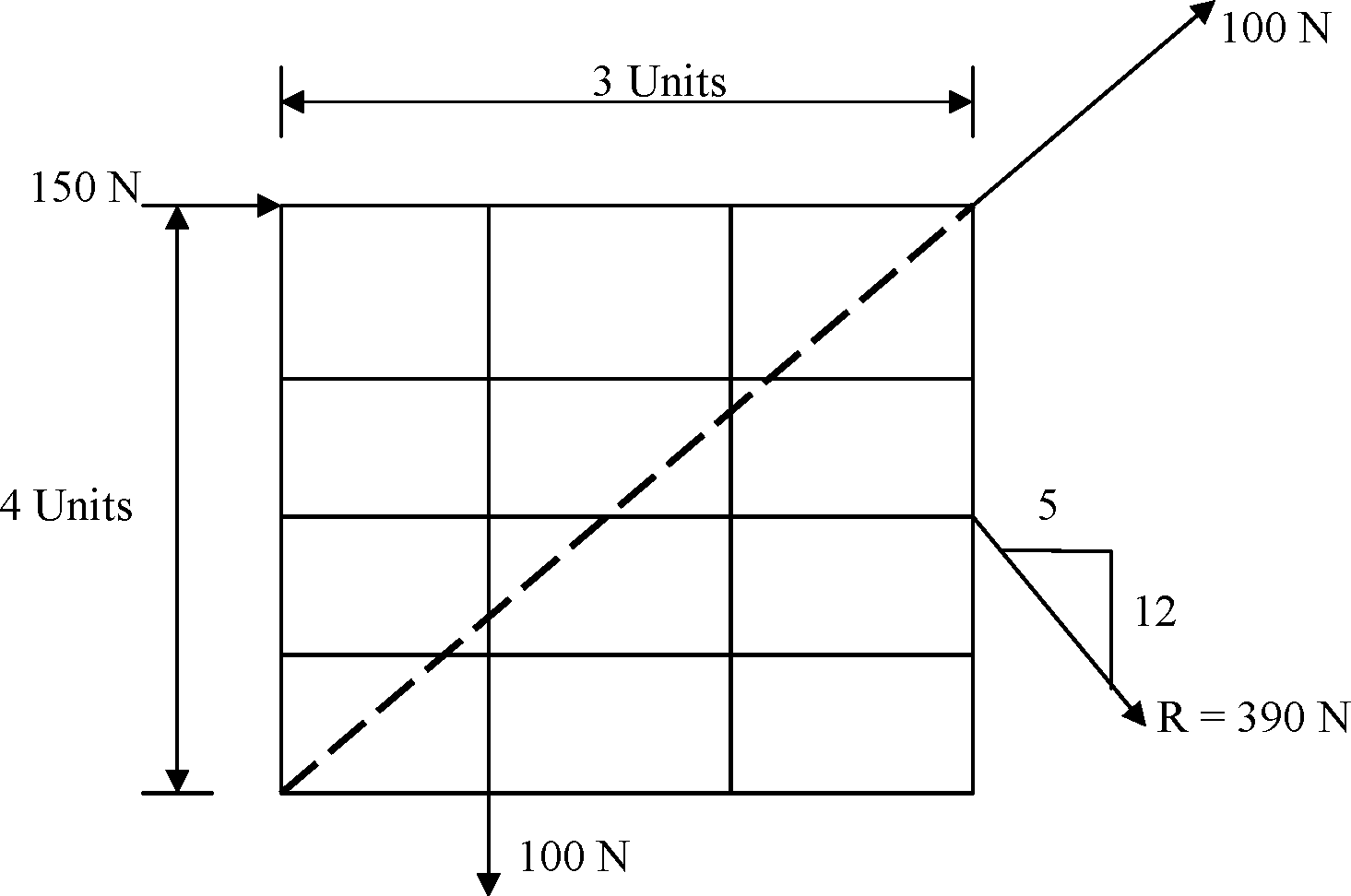 |
b) Four forces are acting on a bolt shown in Fig 4. Determine the magnitude and direction of
the resultant. 10 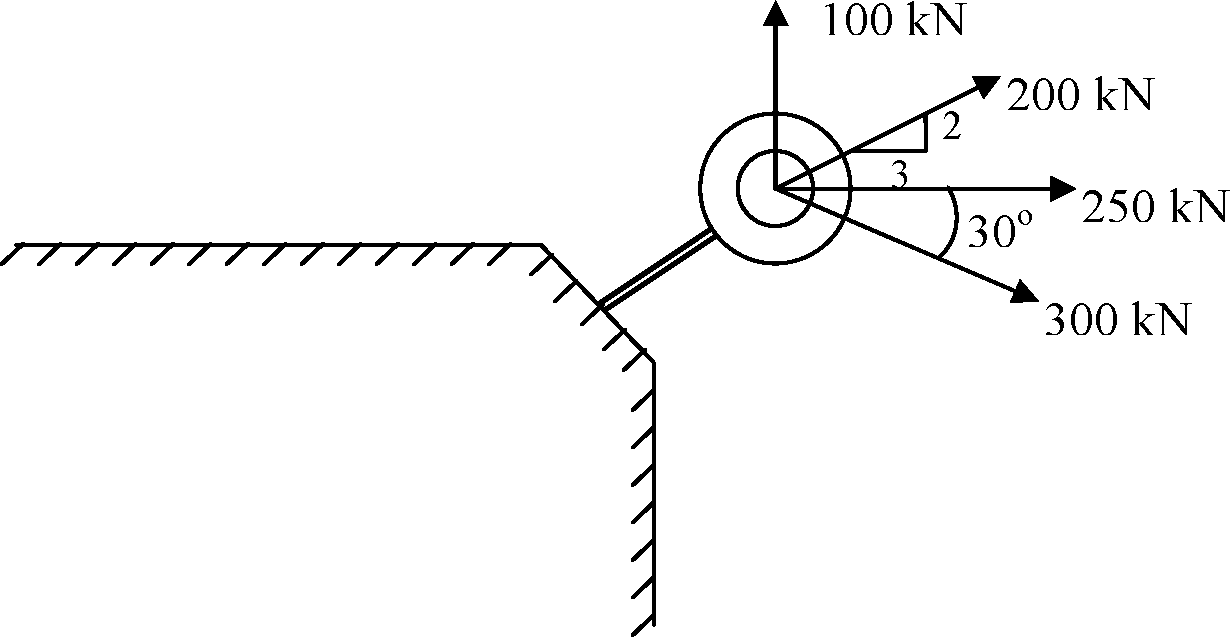
4. a) Locate the centroid of a semicircular section using method of integration
b) Locate the centroid of the plane shown in Fig. 5 with respect to O.
o
c) The centroid of a rectangle is to be shifted from O to Oi (Refer Fig. 6). This is accomplished by removing the hatched portion, which is symmetrical about XX axis. Determine the area of the hatched portion 06 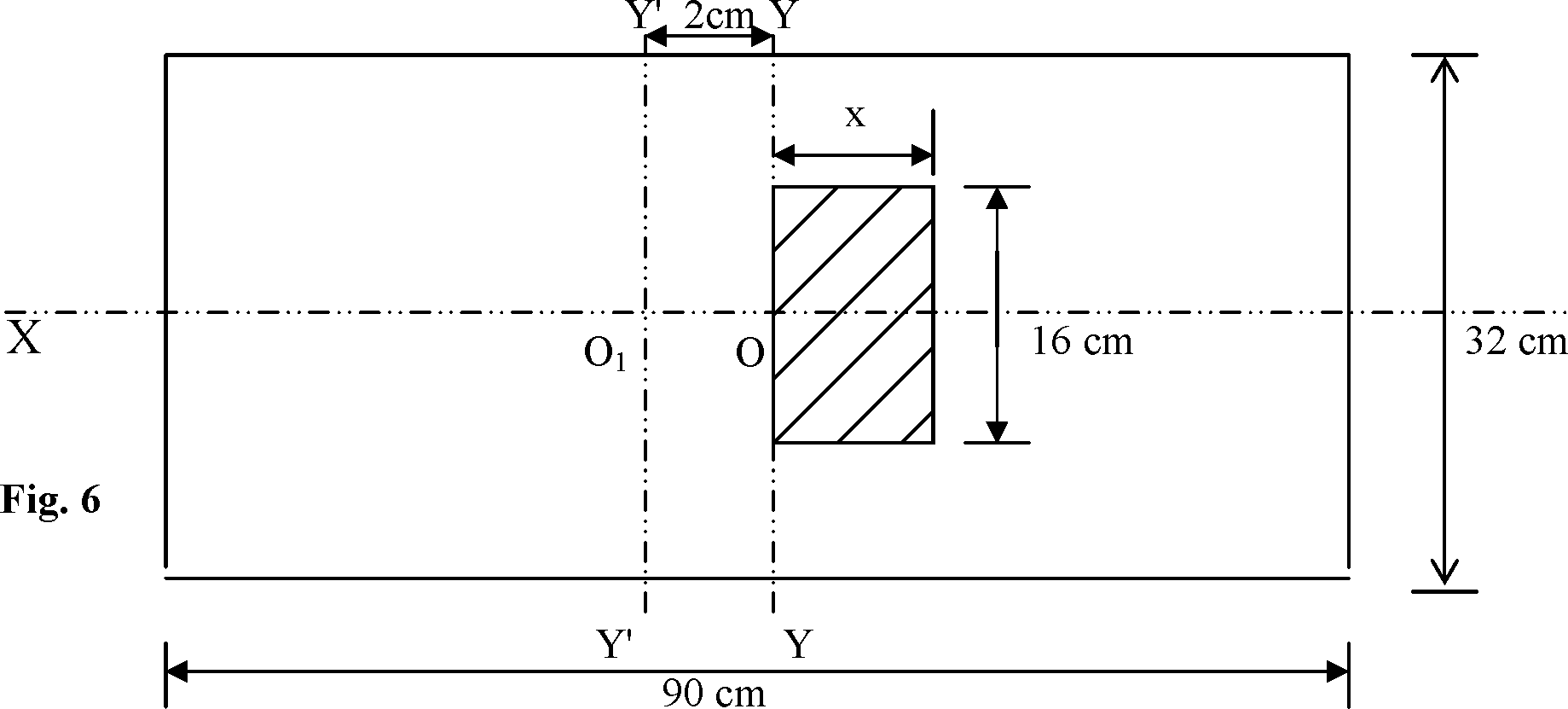
Part - B
5. a) State and prove Lamis theorem
b) State the equilibrium conditions for
i) a system of coplanar concurrent forces
ii) a system of coplanar non- concurrent forces
c) Determine the tensions in different parts of the string shown in Fig 7. Also find the values of Wi and W2 if the portion BC is horizontal. y ' 12
Fig 7
6. a) Write short notes on the following
i) Determinate beams
ii) Indeterminate beams
b) Explain with neat sketches the following types of supports
i) Roller support ii) Hinged support iii) Fixed support
c) Find the support reactions for the beam loaded as shown in Fig. 8
 |
|
-*N-
-*N-
-*N- |
7. a) Define the following 06
i) Angle of friction
ii) Angle of Repose
iii) Cone of friction
b) A body of weight 200N is acted upon by a force of 40 kN as shown in Fig. 9. If the coefficient of friction between the inclined plane and the body is 0.3., check weather the body moves up the plane or down the plane or remains stationary 07 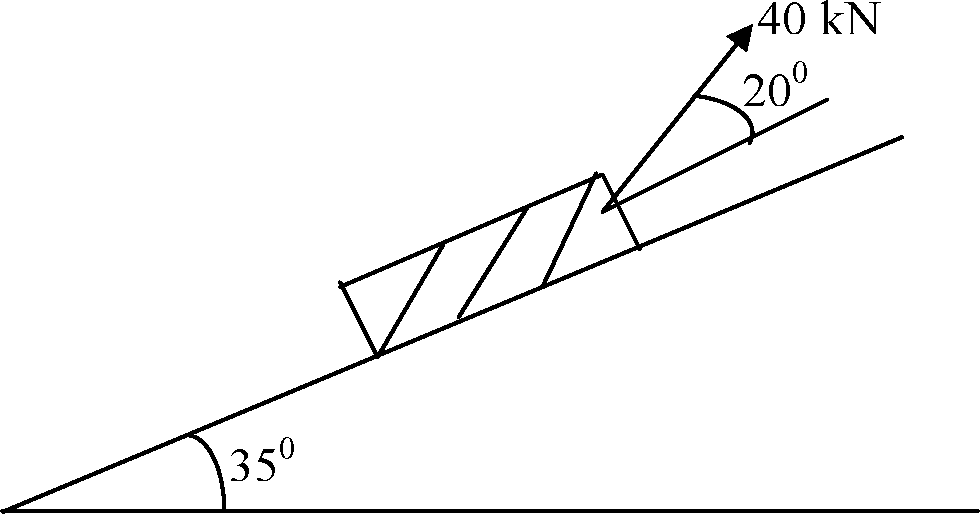
c) Find the force P on the wedge in the arrangement of block and wedge shown in Fig. 10 to cause the impending motion. Take = 0.3 at all surfaces of contact. 07
Fig 10
I. a) Write a note on second moment of area 05
b) Obtain an expression for the moment of inertia of a rectangular section about its horizontal
centroidal axis from first principle 05
c) Compute the moment of inertia of the area shown in Fig. 11 about the axis A - B. 10
All dimensions are in mm
Fig. 11
06 CIV 13 /23 Elements of Civil Engineering and Engineering Mechanics
Model Question Paper (Revised Syllabus)
Time: 3 Hours Max Marks: 100
Note: Answer FIVE full questions choosing at least TWO from each Part PART-A
1 a) Briefly explain the scope of following fields of civil engineering.
i) Surveying ii) Water Resources Engineering 10
b) With a neat sketch, explain the following components of the road.
i) Pavement ii) Camber iii) Shoulder iv) Formation 06
c) With a neat sketch, explain the following
i) Skew bridge ii) Gravity dam. 04
2 a) What is a force? What are its characteristics? 05
b) Write a note on principle of transmissibility of forces and its limitations. 05
c) What is a couple? List its characteristics 05
d) Reduce the force acting at A into a system of force and couple at point O.
(Refer Fig. 1) 05
y
Fig. 1
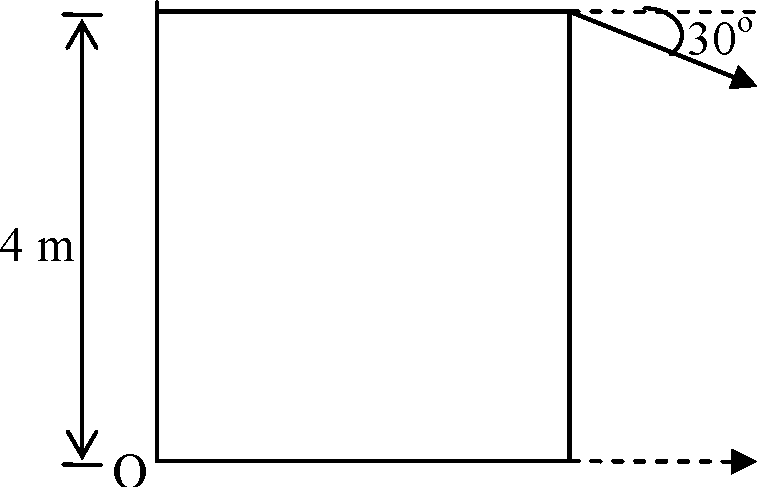 |
k40 kN
x |
|
->1 |
a) State and prove Varignons theorem of moments. 05
b) Define the terms
i) Composition of a force system. ii) Resolution of force 05
c) Find the magnitude, direction and distance of the resultant from the point A for the
system of forces shown in Fig. 2. 10
|
1 m . 1 m . Dl<-X>\<r-->1 C |
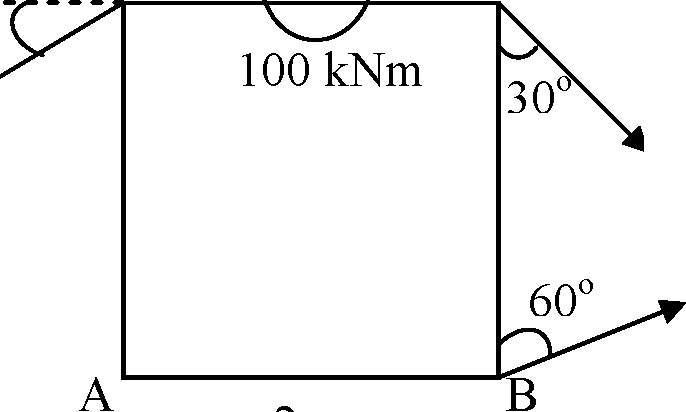 |
45 kN
60 kN |
|
2 m |
4 a) Locate the centroid of a triangle by the method of integration
b) Determine the position of the centroid of the area shown in Fig. 3.
|
Fig. 3 |  |
Part - B
5 a) Explain the following 08
i) Free body diagram. ii) Equilibrium conditions. iii) Lamis theorem. iv) Equilibrant
b) Determine the reactions at the surfaces of contact and tension in the string AB shown in Fig. 4.
12
|
Fig. 4 | 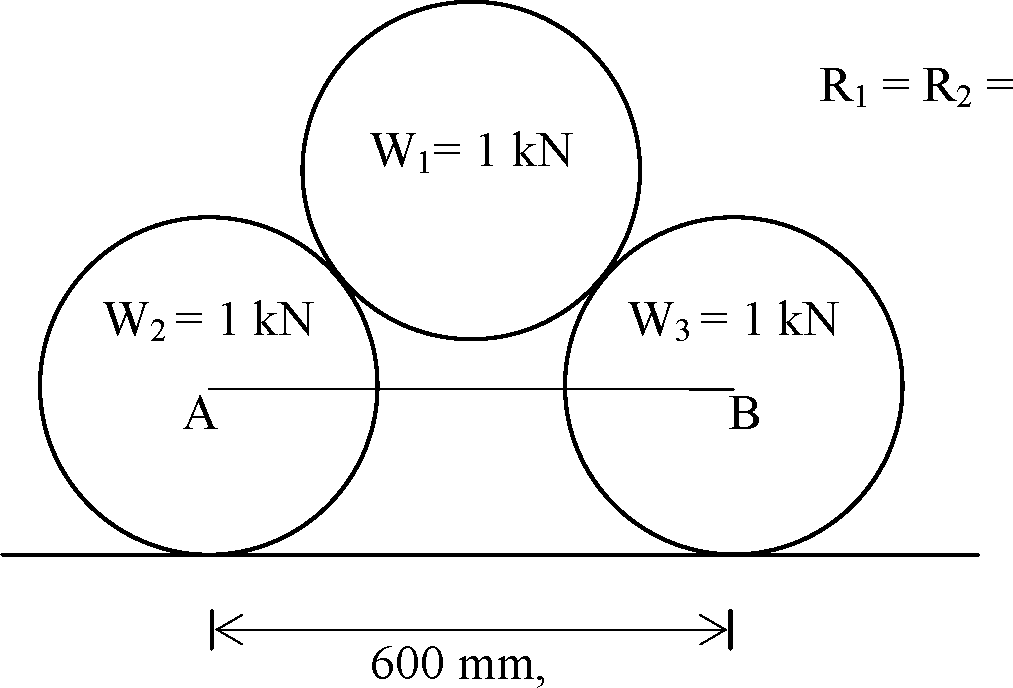 |
R3 = 200 mm
6 a) With neat sketches, explain various types of supports
b) Write the free body diagrams of identical spheres A and B shown in Fig. 5. 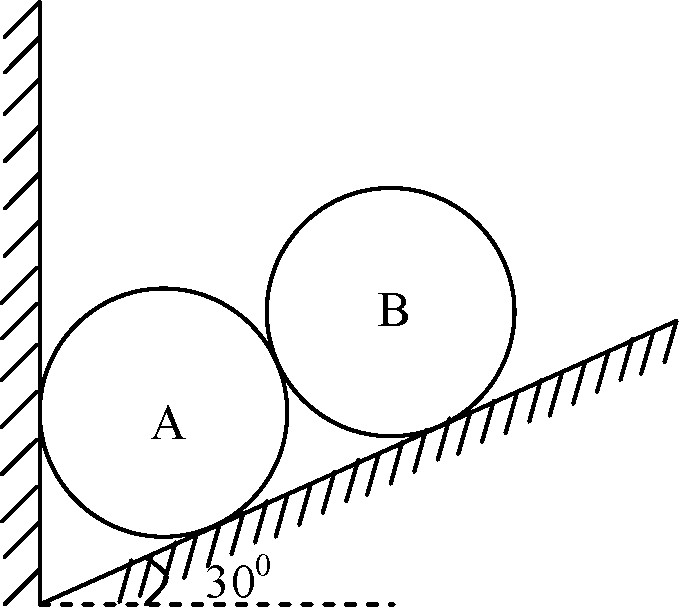
c) Determine the reactions at the supports A and B for a beam loaded as shown in Fig. 6
10
60 kN/m 
1.5 m
a) State the laws of static friction 05
b) Show that angle of friction is equal to angle of repose 05
c) Two blocks A and B connected by a horizontal link are supported on two rough planes as shown
in Fig. 7. The coefficient of friction for the block A and the horizontal plane is 0.40. The angle of friction for block B on the inclined plane is 200. What is the smallest weight WA of the block A for which the equilibrium of system can exist?
|
Fig. 7 | 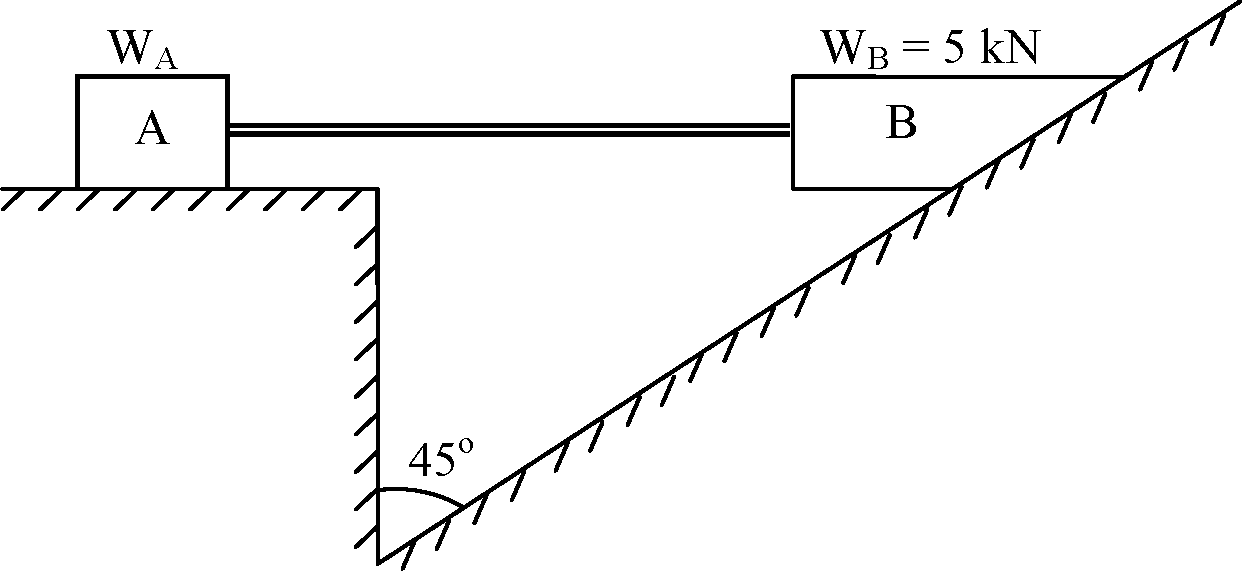 |
8 a) Write short notes on
i) Polar moment of inertia. ii) Radius of gyration
b) State and prove parallel axis theorem?
c) Compute the second moment of the built up area shown in Fig. 8 about its horizontal centroidal axis and find the corresponding radius of gyration.
10
10
Fig. 8
All dimensions are in mm
10
10 10 10
Add comment
| Earning: Approval pending. |
|
|
You are here:
PAPER  Visvesvaraya Technological University (VTU) 2006 B.Tech Civil Engineering end semester - Question Paper Visvesvaraya Technological University (VTU) 2006 B.Tech Civil Engineering end semester - Question Paper
| 